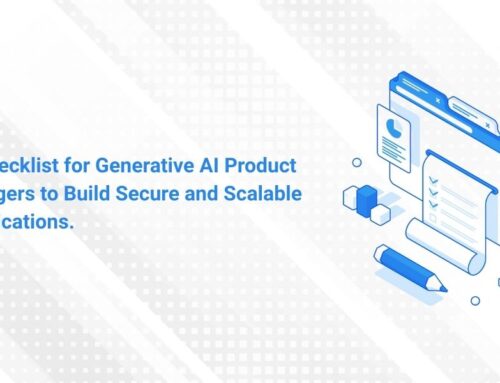The Three Pillars for AI Project Success
Artificial Intelligence (AI) might seem like it can solve any and all business problems, but success is not guaranteed by any stretch. Nowadays, businesses are so eager to jump on the AI train that they invest in AI projects, but they need to have the necessary foundation in place to make it worthwhile. In fact, Gartner famously predicted that 85% of AI projects would fail in 2022, despite an upward trajectory in the number of businesses investing in AI. The industry value of AI is estimated to increase by over 13x, to an astounding $1.81 trillion, over the next eight years, yet so many businesses will not even reach deployment.
What’s going wrong?
The reality is that extracting value from AI goes much further than technical capabilities – it rests on three pillars, which must all exist simultaneously: People, Processes, and Technologies. Organizations that wish to use AI to help drive growth, efficiency, and precision in their business, must honor all three pillars.
Let’s take a deeper look at each pillar.
People
The first pillar of realizing value from AI projects is people. Without a team of data-enthusiastic, data-minded, and data-driven humans, AI projects will not reach their full potential.
What does this look like in practice? Your team must become data citizens. This means not only do they understand how to work with data when it comes to feeding ML algorithms, but they must bake a data-driven approach into every aspect of their work.
They must adopt a data mentality and deeply understand how to work with it, leveraging it in every critical decision they make in their work. As humans, we have a tendency to be perspective-driven in our decision-making – this is normal and a natural human instinct.
However, to build a truly data-driven team, it’s paramount that team members have the tools, guidance, and incentives necessary to build, over time, a data instinct, always asking the question: “What does the data say?”
Processes
The second pillar, which is closely linked to the success of the first, is Processes.
If people do not have defined processes, they cannot follow them. It’s paramount that any and every process that’s relevant to an AI project is clearly defined. If multiple people are working towards the same goal, yet are all following a distinct series of actions, it becomes difficult to know judge the reliability of the outcome.
Consistent, clear processes that have been tried and tested create efficiency and accuracy in AI projects. They make team members’ jobs easier and allow for projects to run more smoothly, ultimately leading to higher-value outcomes.
Technologies
The third pillar, technologies, is intentionally listed last.
Many business owners would tell you that this is surely the most important aspect of any AI project – the quality and capabilities of the technologies being leveraged.
However, they are mistaken. Technology implementations are becoming more and more common, and barriers to entry are increasingly lower. Most businesses can implement advanced technologies – but can they figure out how to extract value from them?
In order to understand how AI technologies can really benefit you, you have to have the first two pillars in place. Yes, technical capabilities are crucial, but they can easily become a waste of money if you do not have the right people implementing them and using the right processes.
The trend of AI project implementation in businesses across industries is only going to continue on its uphill streak – but don’t get caught up in the hype without laying the foundations for positive ROI.
Interested in how we can help you set your business up for AI success? Get in touch today.









